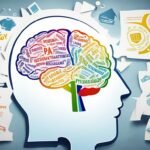Table of Contents
ToggleIn today’s digital age, educators have a wealth of educational tools at their disposal to enhance teaching and create engaging learning experiences for students of all ages. These tools have revolutionized the way teachers and students interact, making education more interactive, personalized, and enjoyable. From online learning platforms to communication and collaboration tools, the options are endless. However, with so many choices available, it can be overwhelming for teachers to identify the most effective tools for their classrooms. In this article, we will explore the top 20 educational tools that are transforming the way teachers teach and students learn.
Key Takeaways:
- Educational tools enhance teaching and create engaging learning experiences.
- There are numerous options available, making it important for teachers to choose wisely.
- The top 20 educational tools offer interactive and personalized learning opportunities.
- These tools foster effective communication and collaboration among students and teachers.
- With the right tools, teachers can create inclusive and accessible education for all students.
Importance of Educational Technology Tools in the Classroom
The Importance of Educational Technology Tools in the Classroom
In the modern education landscape, the integration of educational technology tools has proven to be essential in enhancing teaching and learning experiences for both students and educators. These tools have revolutionized traditional teaching approaches, providing students with easy access to a wide range of information and resources that foster personalized learning and increased engagement. With the rise of online and distance learning, educational technology tools have become even more critical in ensuring effective education delivery.
One of the key educational technology tools that has reshaped the learning landscape is the Learning Management System (LMS). LMS platforms serve as centralized repositories for educational materials, allowing teachers to design and customize interactive lessons tailored to their students’ needs. These systems enable educators to track student progress, administer assessments, and provide immediate feedback, empowering students to take ownership of their learning journey.
Distance learning has become a significant component of education, and educational technology tools play a vital role in its success. These tools facilitate virtual classrooms, where teachers and students can interact seamlessly regardless of their physical locations. Collaborative platforms provide avenues for students to engage in group discussions, share resources, and work on projects together, fostering a sense of community even in a remote setting.
Another important aspect of educational technology tools is the promotion of effective communication and collaboration. Digital tools designed for real-time communication enable students and teachers to communicate instantly, exchange ideas, and provide feedback. These tools also facilitate interaction between teachers, students, and parents, creating a comprehensive classroom community. This collaboration supports collaborative problem-solving, critical thinking, and teamwork skills development.
In addition to communication and collaboration, technology tools also enhance the design and delivery of interactive lessons. Various applications and software allow teachers to create engaging and interactive instructional materials, incorporating elements like videos, interactive quizzes, games, and simulations. These tools provide students with hands-on learning experiences, promoting active learning, and improving knowledge retention.
To illustrate the impact of educational technology tools in the classroom, consider the following table:
| Educational Technology Tool | Major Features |
|---|---|
| Learning Management System (LMS) | Centralized repository for educational materials, progress tracking, assessments, and feedback |
| Virtual Classroom Platforms | Facilitates distance learning, interactive live sessions, collaboration, and resource sharing |
| Communication and Collaboration Tools | Real-time communication, discussion forums, group projects, and parent-teacher communication |
| Interactive Lesson Design Tools | Creation of engaging instructional materials incorporating videos, quizzes, games, and simulations |
In conclusion, educational technology tools have become indispensable in the modern classroom, enhancing teaching and learning experiences in various ways. From facilitating distance learning to promoting communication, collaboration, and interactive lesson design, these tools have transformed education delivery. As technology continues to advance, educators must embrace these tools to provide students with a dynamic and engaging learning environment that prepares them for the future.
Technology Tools for Interactive Lessons
Interactive lessons play a crucial role in engaging students and promoting active learning. By incorporating technology tools into their teaching practice, educators can create dynamic and interactive lessons that cater to the diverse needs and interests of their students. In this section, we will explore a variety of technology tools that can be used to design and deliver engaging and interactive lessons.
Create Personalized Lessons with Interactive Platforms
Technology tools offer educators the ability to design personalized lessons that capture student’s attention and foster active participation. With interactive platforms, teachers can incorporate a variety of multimedia elements such as videos, educational games, and polls into their lessons. These platforms allow students to engage with the material in a hands-on and innovative way, promoting deeper understanding and retention of concepts. Whether in a physical or virtual classroom, interactive platforms provide an immersive learning experience that sparks curiosity and promotes critical thinking.
Turn Ideas into Reality with Electronic Building Blocks
One of the exciting ways to make lessons interactive is through the use of electronic building blocks. These tools enable students to explore and experiment, bringing their ideas to life. By combining electronic components, sensors, and programming, students can design and create their own projects, promoting creativity, problem-solving, and teamwork. Electronic building blocks foster an immersive learning experience where students actively engage with STEM concepts and develop essential skills for the future.
Engage Students with Educational Games
Educational games have proven to be an effective tool for engaging students and enhancing learning outcomes. With technology, teachers can leverage a wide variety of educational games that align with the curriculum and learning objectives. These games provide a fun and interactive way for students to practice and apply what they have learned in a real-world context. From language learning games to math puzzles and science simulations, educational games make learning enjoyable while reinforcing key concepts and skills.
“Technology tools allow educators to design interactive lessons that captivate students and enhance the learning experience.”
Technology tools have revolutionized the way educators create interactive lessons. By incorporating personalized interactive platforms, electronic building blocks, and educational games, teachers can enhance student engagement and create a vibrant learning environment. These technology tools empower students to actively participate and explore, fostering a love for learning and equipping them with the necessary skills for the future.
Technology Tools for Communication and Collaboration

Effective communication and collaboration are essential components of a successful learning environment. In today’s digital age, technology tools play a crucial role in facilitating seamless communication and collaboration among students and between students and teachers. These tools provide a platform for real-time feedback, instant engagement, and comprehensive classroom communities, promoting effective communication and collaboration in both virtual and in-person settings.
One communication tool that has become increasingly popular is Slack. Slack provides a centralized hub for teachers, students, and parents to connect, share resources, and discuss important topics. This collaboration tool allows for seamless communication through channels, direct messages, and file sharing, fostering a sense of community and enhancing student engagement.
Another valuable technology tool for collaboration is Google Workspace (formerly G Suite). Google Workspace offers a suite of applications, such as Google Docs, Google Sheets, and Google Slides, that allow students and teachers to create, edit, and collaborate on documents in real time. This virtual learning platform enables students to work together on group projects, share ideas, and provide feedback, promoting a collaborative and interactive learning experience.
Additionally, Zoom has emerged as a popular communication tool, particularly in the context of virtual learning. Zoom allows for video conferencing, screen sharing, and interactive breakout rooms, facilitating seamless communication and collaboration among students and teachers in a virtual setting. This online collaboration tool has become a staple in remote learning environments, enabling educators to foster a supportive and interactive learning environment.
Benefits of Technology Tools for Communication and Collaboration
The integration of technology tools for communication and collaboration in the classroom offers numerous benefits. Firstly, these tools break down barriers and enable students and teachers to connect and communicate regardless of physical distance. This is especially valuable in virtual learning settings, where students may be physically separated but still need to interact and collaborate on projects.
Moreover, technology tools promote active engagement and participation by facilitating real-time collaboration and feedback. Students can actively contribute to discussions, provide instant feedback on assignments, and collaborate on projects, resulting in a more interactive and engaging learning experience. Additionally, these tools can enhance student learning outcomes by encouraging critical thinking, problem-solving, and team-building skills.
In summary, technology tools for communication and collaboration play a vital role in modern education. From platforms like Slack and Google Workspace to tools like Zoom, these resources empower teachers to create a supportive and interactive learning environment, enhancing student engagement and promoting effective communication and collaboration. By utilizing these technology tools, educators can foster a sense of community, facilitate meaningful collaboration, and prepare students for success in an increasingly digital world.
Technology Tools for Design and Development
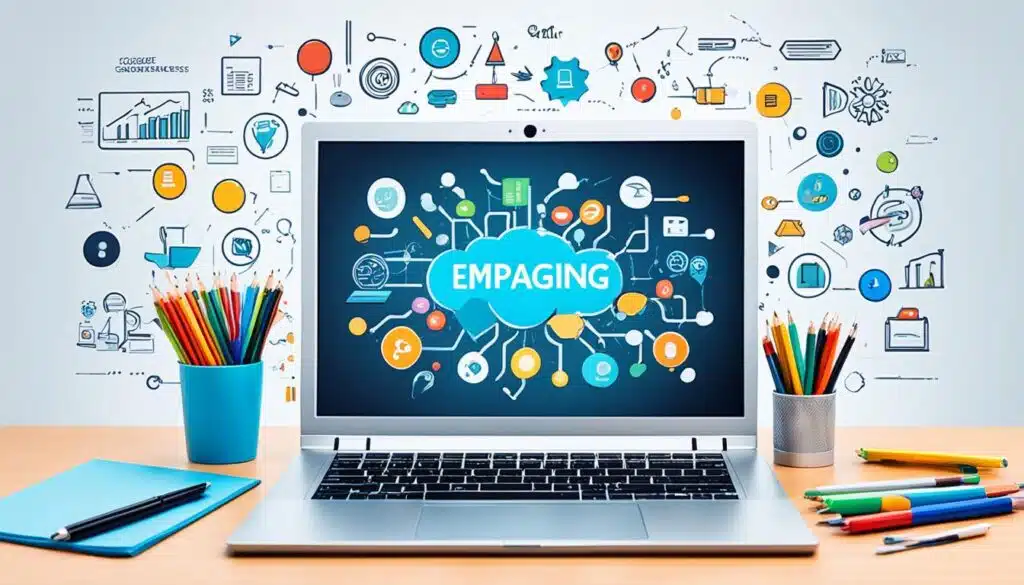
When it comes to creating visually captivating educational content, design and development tools are indispensable. These tools enable educators to design engaging learning materials that capture students’ attention and enhance their understanding. From graphic design software to digital platforms, there is a plethora of technology tools available for teachers and students to explore. Let’s delve into some of the top tools in design and development that can transform the educational experience.
Graphic Design Tools
One of the key aspects of design and development in education is graphic design. This encompasses creating stunning presentations, infographics, and videos that effectively communicate information to students. With graphic design tools like Adobe Creative Cloud, Canva, and Piktochart, teachers can bring their lessons to life with visually appealing visuals that engage and inspire students.
Digital Platforms for Interactive Content
In today’s digital age, interactive content plays a crucial role in engaging students and enhancing their learning experience. Digital platforms like Nearpod, Edpuzzle, and Pear Deck offer a wide range of templates and features that enable teachers to create interactive lessons. Whether it’s adding interactive quizzes, virtual field trips, or collaborative activities, these platforms provide a dynamic and immersive learning environment for students.
Presentation Tools
Presentation tools are essential for delivering engaging and visually captivating lessons. Platforms like Microsoft PowerPoint, Google Slides, and Prezi provide teachers with a variety of templates, animations, and interactive features to make their presentations more dynamic. These tools allow educators to present information in an organized and compelling manner, keeping students actively involved throughout the lesson.
Digital Platforms for Collaboration
Collaboration is an essential skill for students to develop, and digital platforms facilitate this process effectively. Tools like Google Drive, Microsoft Teams, and Slack enable students and teachers to collaborate on projects, share resources, and provide feedback in a seamless and organized manner. These platforms empower students to work together, fostering teamwork and enhancing their learning experience.
| Tool | Description |
|---|---|
| Adobe Creative Cloud | Offers a wide range of graphic design software for creating visually stunning educational materials. |
| Canva | An easy-to-use graphic design tool with a vast library of templates and design elements. |
| Piktochart | Enables users to create beautiful infographics and visual presentations with drag-and-drop functionality. |
| Nearpod | A digital platform that allows teachers to create interactive lessons with quizzes, polls, and virtual field trips. |
| Edpuzzle | Enables teachers to create interactive video lessons by adding questions, comments, and quizzes to existing videos. |
| Pear Deck | Offers interactive presentation tools that allow teachers to engage students through real-time questions and discussions. |
| Microsoft PowerPoint | A widely used presentation software with a range of design features and customization options. |
| Google Slides | A cloud-based presentation tool that allows for collaboration and easy sharing of presentations. |
| Prezi | Offers a unique and engaging presentation experience with its zooming and panning features. |
| Google Drive | A cloud-based storage and collaboration platform that enables students and teachers to work on projects together. |
| Microsoft Teams | A communication and collaboration platform that facilitates teamwork and resource sharing. |
| Slack | A team communication tool that allows for seamless collaboration and sharing of ideas and files. |
Technology Tools for Review and Assessment

Reviewing and assessing students’ progress is vital to ensure effective learning outcomes. In this section, we will explore a range of technology tools that can revolutionize the review and assessment process. These tools provide innovative ways to engage students, measure their understanding, and gain valuable insights into their performance.
Game-Based Review Platforms
One powerful tool for engaging review activities is game-based platforms. These platforms allow teachers to transform question sets into interactive games, making the review process more enjoyable and stimulating for students. By turning assessments into a fun and competitive experience, student participation and retention increase significantly. Popular review tools like Kahoot! and Quizizz offer customizable features, such as timed quizzes and leaderboard tracking, that foster healthy competition and motivate students to excel.
Interactive Quiz Tools
Interactive quizzes provide teachers with a dynamic way to assess students’ comprehension and knowledge retention. With user-friendly platforms like Formative and Quizlet, educators can create and share high-quality quizzes that incorporate various question types, such as multiple-choice, fill-in-the-blank, and matching. These tools also enable teachers to provide immediate feedback, allowing students to gauge their progress and identify areas for improvement.
“Technology tools for review and assessment enhance student engagement and provide valuable insights into student performance.”
Online Testing Platforms
Online testing platforms offer a convenient and efficient way to administer assessments and track student progress. With tools like Google Forms and Moodle, teachers can create customized online tests that include various question formats and provide automated grading. These platforms also offer features like question randomization and secure browser lockdown, ensuring the integrity of the assessment process.
Digital Portfolio Assessment Tools
Digital portfolio assessment tools enable students to showcase their work and demonstrate their understanding through multimedia presentations. Platforms like Seesaw and Schoology allow students to curate and share their learning artifacts, such as projects, essays, and artwork. With these tools, teachers can assess students’ progress holistically by evaluating their creativity, critical thinking, and problem-solving skills.
Evaluation and Data Analysis Platforms
To gain valuable insights into student performance and inform instructional decisions, teachers can utilize evaluation and data analysis platforms. Tools like Edpuzzle and Classcraft provide comprehensive analytics and reporting features, allowing educators to track individual student progress, identify learning gaps, and tailor their teaching strategies accordingly. These platforms help create data-driven classrooms that prioritize personalized instruction.
Assessment feedback with Immediate actionable insights for teachers
Technology Tools for Classroom Management
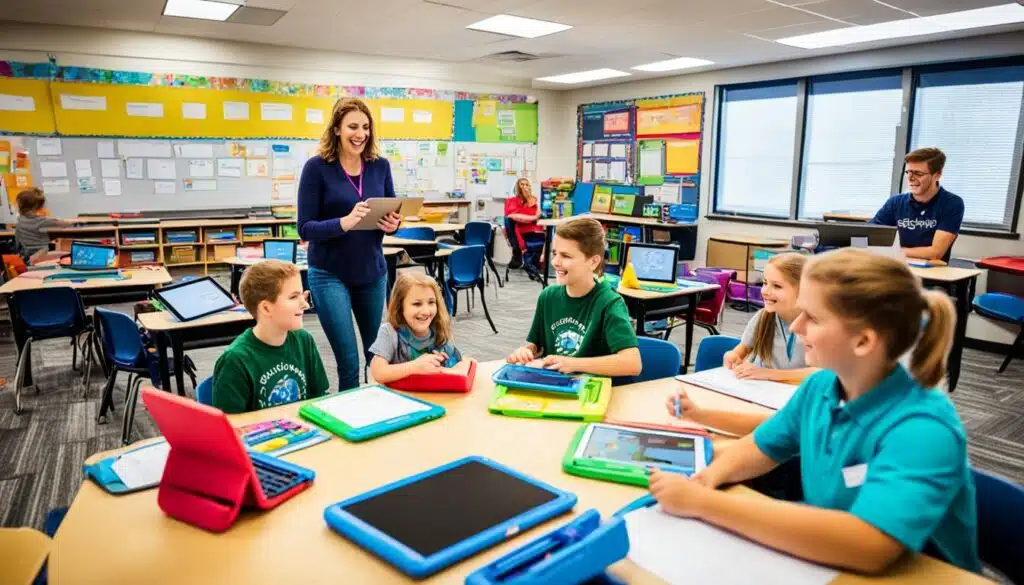
Effective classroom management is crucial for creating a productive learning environment. With the help of technology tools, teachers can streamline various aspects of classroom management, saving time and staying organized. These tools assist with attendance tracking, behavior management, lesson planning, and resource sharing.
Attendance Tracking
Technology tools provide convenient solutions for tracking attendance. Teachers can use specialized platforms to take attendance digitally, eliminating the need for manual record-keeping. Automated attendance systems ensure accuracy and enable teachers to quickly identify patterns of absenteeism or tardiness.
Behavior Management
Managing student behavior is a key aspect of classroom management. Technology tools offer innovative solutions for behavior tracking and management. Teachers can utilize apps and software platforms that enable them to record and monitor student behavior. These tools provide insights into individual student behavior patterns, allowing teachers to intervene proactively and implement appropriate strategies.
Organizational Tools
Keeping classroom resources and materials organized is essential for smooth classroom management. Technology tools provide teachers with organizational solutions that simplify lesson planning and resource sharing. These tools enable teachers to create digital lesson plans, share resources with students and colleagues, and easily access materials needed for instruction.
“Technology tools have revolutionized classroom management. They streamline administrative tasks, enhance communication, and create an organized learning environment for both teachers and students.”
By leveraging these technology tools, educators can create a structured and conducive learning environment. Classroom management becomes more efficient, allowing teachers to focus on instruction and student engagement. These tools facilitate better communication between teachers, students, and parents, fostering collaboration and promoting a positive classroom culture.
| Technology Tools for Classroom Management | Description |
|---|---|
| Attendance Tracking Platforms | Automated systems for digitally tracking student attendance, reducing paperwork and ensuring accuracy. |
| Behavior Management Apps | Tools for recording and monitoring student behavior, providing valuable insights for proactive intervention. |
| Organizational Platforms | Digital tools for lesson planning, resource sharing, and easy access to instructional materials. |
Technology Tools for Personalized Learning
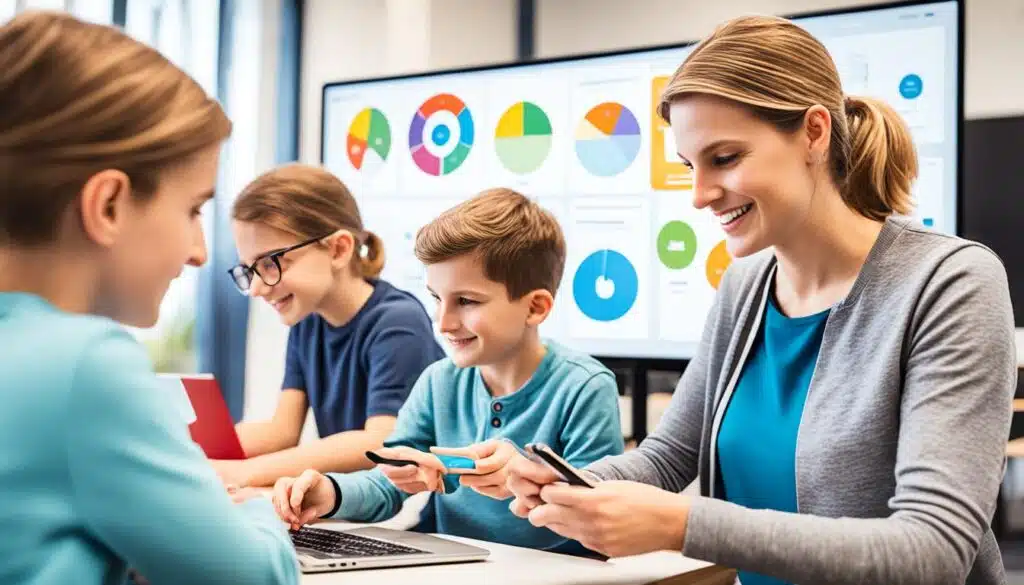
Personalized learning is an innovative approach that aims to tailor instruction to meet the unique needs and interests of each student. By utilizing technology tools specifically designed for personalized learning, educators can provide tailored instruction that enhances student learning outcomes. These tools enable teachers to create customized learning experiences that cater to the individual strengths and challenges of their students.
The Power of Adaptive Learning Platforms
Adaptive learning platforms are revolutionizing personalized learning by providing tailored instruction based on individual student progress. These platforms use advanced algorithms to analyze student performance and identify areas for improvement. By continuously adapting the learning journey to meet each student’s needs, adaptive learning platforms ensure a personalized and effective learning experience. Students can work at their own pace, receive immediate feedback, and access resources that address their specific learning gaps.
One example of an adaptive learning platform is Khan Academy, which offers a vast array of educational resources and adaptive practice exercises. Khan Academy tracks students’ progress and provides personalized recommendations to help them master concepts and skills. This adaptive learning platform empowers students to take control of their learning journey and reinforces their understanding through tailored instruction.
Identifying Educational Gaps with Data-Driven Tools
Data-driven tools play a crucial role in personalized learning by helping educators identify and address educational gaps. These tools collect and analyze data on student performance, enabling teachers to pinpoint areas where students may be struggling. Armed with this information, educators can provide targeted interventions and resources to support students in overcoming challenges and reaching their full potential.
One such data-driven tool is DreamBox, an adaptive math program that provides personalized lessons based on real-time student data. DreamBox identifies gaps in students’ understanding and tailors instruction to fill those gaps. With its engaging and interactive approach, DreamBox helps students build a strong foundation in math and fosters a positive attitude towards learning.
Customizing Practice with Personalized Learning Tools
Personalized learning tools offer a variety of ways to customize practice and provide students with opportunities to reinforce their understanding. These tools allow teachers to create individualized assignments, quizzes, and activities that align with each student’s unique learning goals. By tailoring practice to suit their needs, students can strengthen their skills and deepen their understanding in a way that is meaningful to them.
One noteworthy personalized learning tool is Quizlet, a platform that allows teachers to create customized flashcards, quizzes, and study sets. With Quizlet, students can review and practice key concepts in a way that suits their learning style. The platform also offers interactive games and study modes that make learning engaging and enjoyable.
| Adaptive Learning Platform | Data-driven Tool | Personalized Learning Tool |
|---|---|---|
| Khan Academy | DreamBox | Quizlet |
These technology tools for personalized learning empower educators to create tailored instruction, identify educational gaps, and customize practice for their students. By integrating these tools into their teaching practice, teachers can provide students with personalized learning experiences that cater to their individual needs, enhancing engagement and improving learning outcomes.
Technology Tools for Accessible Education
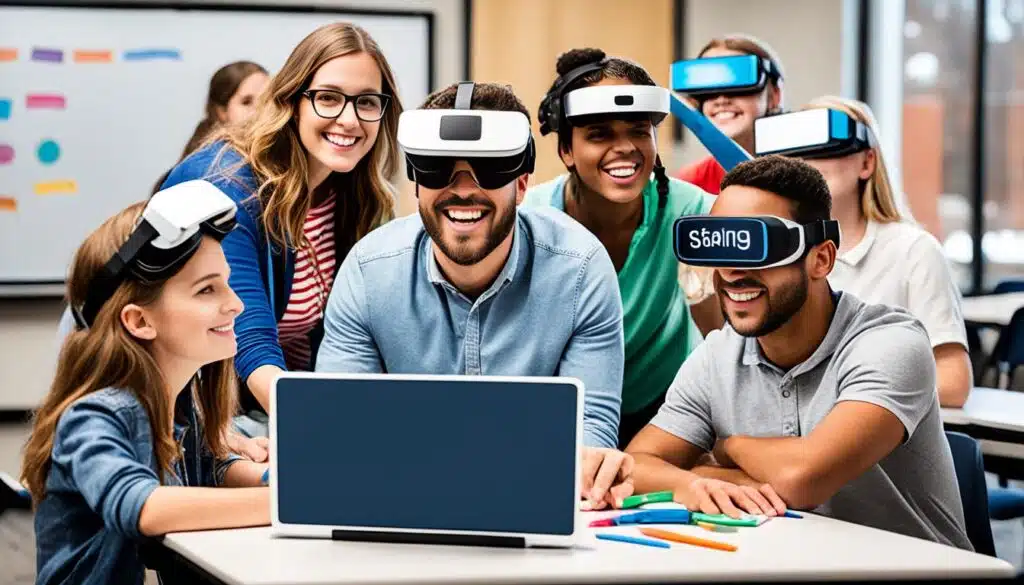
Accessible education is a fundamental aspect of creating an inclusive learning environment that caters to the diverse needs of all students. In this section, we will explore technology tools that promote accessibility and support inclusive education practices. By utilizing these assistive technology tools, educators can ensure that every student has equal access to learning opportunities.
Collaborative Coding Environments
One of the remarkable tools that foster accessible education is collaborative coding environments. These platforms enable students to work together on coding projects, breaking the barriers of traditional electronic devices. By incorporating tactile and interactive components, these coding environments engage students with different abilities, including those with visual impairments or physical disabilities. Collaborative coding environments empower students to develop problem-solving skills, enhance creativity, and participate equally in coding activities.
Services for Hearing Loss and Visual Impairments
Education should be accessible to students with hearing loss and visual impairments. Utilizing technology tools such as captioning services and screen reader software, educators can ensure that these students can fully engage with the learning materials. Captioning services provide real-time captions for video content, making it accessible for students with hearing impairments. Screen reader software converts written text into speech or braille, enabling students with visual impairments to access digital content. By integrating these services into their teaching practice, educators can create an inclusive learning experience for all students.
Augmented Reality for Inclusive Learning
Augmented reality (AR) technology offers unique opportunities for inclusive education. AR applications create interactive experiences by overlaying digital content onto the physical world. These applications can be used to provide additional visual aids, tactile learning experiences, and multisensory engagement. For example, AR can enhance the learning of students with autism by creating visually stimulating and interactive scenarios that support their social and communication skills development. By leveraging the power of AR technology, educators can tailor their lessons to meet the individual needs of students and promote inclusive learning.
These technology tools for accessible education demonstrate the potential for creating inclusive and engaging learning environments. By embracing assistive technology tools, educators can ensure that all students have equal access to educational opportunities, regardless of their abilities. The integration of these tools fosters a sense of inclusivity and enables every student to thrive in their educational journey.
Technology Tools for Language Instruction
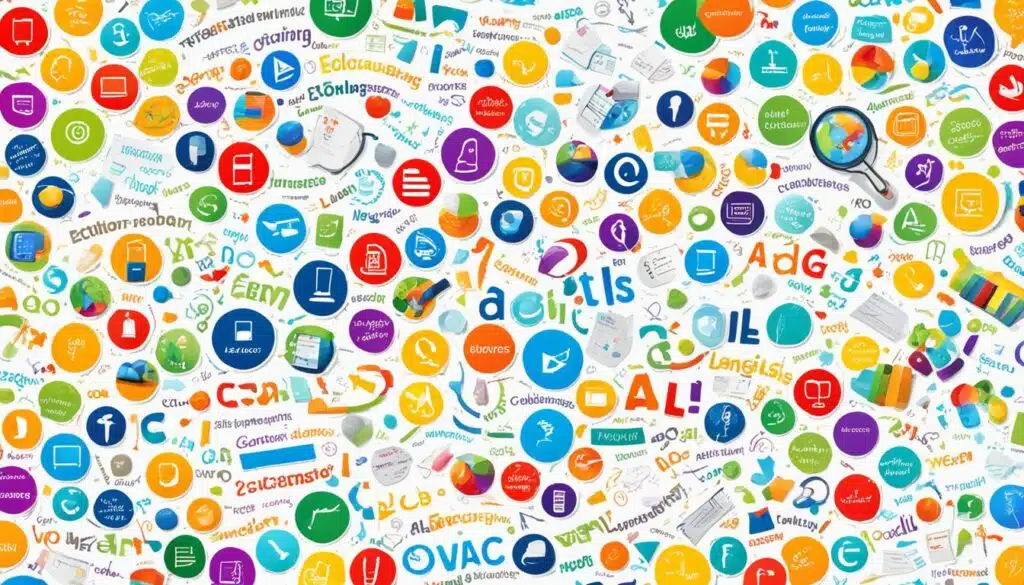
Language instruction is a critical aspect of education, and technology tools can greatly enhance the language learning process. In this section, we will explore a range of technology tools that are specifically designed for language instruction. These tools provide students with opportunities to practice and improve their language skills in an interactive and engaging manner, fostering fluency and proficiency.
Online Dictionaries
Online dictionaries are invaluable language teaching tools that provide students with instant translations, definitions, and examples. They enhance vocabulary acquisition and help students understand the nuances of different words and phrases. Some popular online dictionaries include:
Language Learning Platforms
Language learning platforms provide comprehensive learning materials and interactive exercises to support language acquisition. These platforms often utilize gamification elements to engage and motivate students. Some popular language learning platforms include:
Video-Sharing and Discussion Apps
Video-sharing and discussion apps offer language learners the opportunity to practice their speaking and listening skills in a collaborative environment. These apps allow students to watch and discuss videos, participate in conversation groups, and receive feedback from native speakers. Some popular video-sharing and discussion apps include:
Technology tools for language instruction provide students with interactive and engaging learning experiences, allowing them to practice and improve their language skills effectively. By incorporating these tools into language teaching, educators can create immersive environments that promote fluency, proficiency, and cultural understanding.
Every language learner can benefit from the use of technology tools in their language instruction. Whether it’s through online dictionaries, language learning platforms, or video-sharing and discussion apps, these tools support and enhance language acquisition. Educators can employ a combination of these tools to create a well-rounded and engaging language curriculum.
| Technology Tool | Description |
|---|---|
| Online Dictionaries | Provide instant translations and definitions, aiding vocabulary acquisition. |
| Language Learning Platforms | Offer comprehensive learning materials and interactive exercises for language acquisition. |
| Video-Sharing and Discussion Apps | Allow for collaborative language practice and feedback from native speakers. |
Also Read : Undergraduate vs Graduate: Key Differences Explained
Conclusion
The use of educational tools is revolutionizing the modern classroom. From interactive lesson planning to communication and collaboration platforms, these tools have the potential to transform teaching and learning experiences. By incorporating these technology tools into their teaching practice, educators can enhance engagement, create engaging learning environments, and provide students with personalized learning opportunities.
Online learning has become an integral part of education, and educational tools play a crucial role in fostering student engagement in virtual settings. These tools enable teachers to deliver interactive and immersive learning experiences that capture students’ attention and make learning enjoyable. By leveraging the power of technology, educators can create dynamic and interactive lessons that cater to the diverse needs and interests of their students.
As technology continues to evolve, it is crucial for educators to stay informed and embrace these tools to meet the needs of their students. Educational tools empower teachers to create engaging learning environments that foster curiosity, critical thinking, and collaboration. By harnessing the possibilities offered by these tools, educators can unlock the full potential of their students and prepare them for success in the digital world.
FAQs
Q: What are educational tools?
A: Educational tools refer to resources, software, or platforms designed to enhance teaching and learning experiences.
Q: How can teachers benefit from using online teaching tools?
A: Teachers can benefit from online teaching tools by creating engaging lessons, tracking student progress, and accessing a wide range of educational materials.
Q: What are some popular digital resources for teaching?
A: Some popular digital resources for teaching include interactive online games, math learning apps, and educational platforms where teachers can share resources.
Q: How can educational institutions make use of management tools?
A: Educational institutions can use management tools to streamline administrative tasks, track student data, and improve overall efficiency in operations.
Q: What are the best tools for virtual and distance learning?
A: The best tools for virtual and distance learning include online platforms for hosting virtual classrooms, collaboration tools for group projects, and interactive resources for engaging students remotely.
Q: How do teachers use digital resources in the classroom?
A: Teachers use digital resources in the classroom to supplement traditional teaching methods, create interactive lessons, and cater to different learning styles.
Q: What are some online tools teachers can use to keep students interested?
A: Teachers can use online tools such as gamification elements, multimedia presentations, and interactive quizzes to keep students engaged and motivated in learning.


